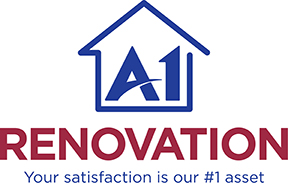It’s not uncommon for a medical office to change the space as both the practice itself and the state guidelines evolve. An unused area being upfitted to become a break room or a hygienic work space is a common goal we’ve observed.
Our team is equipped and experienced for exactly these types of medical office remodels, from the purely functional to the largely cosmetic.
Cosmetic Medical Facility Remodels
Changes and upgrades to the floors, ceilings, and walls are considered cosmetic remodels. But don’t let the word cosmetic be confused with superficial — most of these upgrades require permits and architectural drawings.
Dated, damaged, or dirty walls and floors that can’t be fully cleaned anymore are all common candidates for cosmetic upgrades.
Other upgrades for medical facilities include:
- Installing handrails on walls and stairways
- Painting guide strips on floors for navigation
- Repairing damaged sections of floor
- Installing additional privacy walls, curtains, or other mechanisms
The data has been clear that turning semi-private areas into truly private ones, modernizing amenities, and stepping up the patient experience are major in terms of keeping the medical facility relevant and seen as a go-to in the community.
Medical Office Upfits and Repurposing
Land being at such a premium over the last several years, many medical facilities are inclined to find new ways to get usage out of square footage they already have. This ends up being far cheaper than new construction in most cases.
In a recent hospital survey, CBRE program manager Jason Adkins said the following:
“Land isn’t getting cheaper. Hospitals are constrained by the land surround them and don’t want to put together a portfolio of real estates.”
That can mean repurposing an area that’s no longer needed for a current need, or even creating expansions. Say there’s space surrounding the building that’s currently unused, such as undeveloped grass area or part of the parking lot that visitors don’t need.
In cases like those, it’s possible to strategically remove a wall and extend the building.
That can add meaningful space to your medical facility for any purpose without having to acquire new property.
Many facilities are putting more focus on ambulatory care as well, which requires some renovation itself to fully realize.
“Patients are living longer, but they are more educated and know they can get an outpatient procedure and be back in their home that evening,” Adkins continued. “That’s been the face of healthcare for the past two to three years, and we’re heading in that general direction.”
Call us today to schedule a consult for your next remodel project — we’ll review costs and can optionally help create a plan of action for you so you’ll know exactly which steps to take and what your options are.



